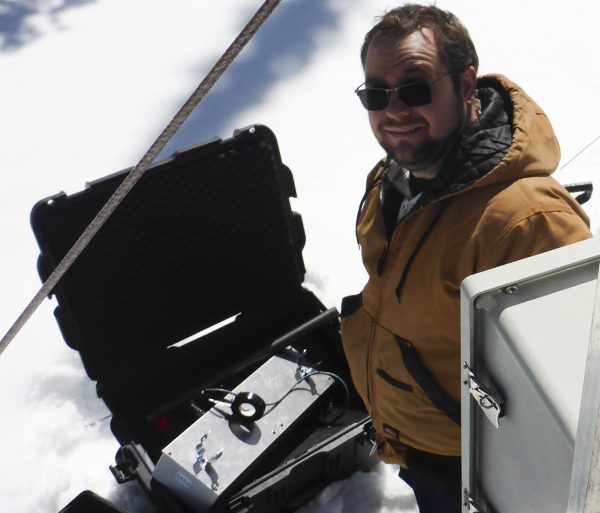Dr. Kinar offers the following tips for success at the post-secondary level:
- When you take a class, try to make the learning personal to you. If you look for a personal application related to the information in a class, you will remember and be able to apply the concepts and techniques. For example, Geology involves the study of folds and faults. When you take notes in the class or read the textbook, try to identify where you might have seen folding and faulting on a recent hike or during a regional journey. We are lucky to be in an area that has a novel and unique natural history that provides many learning experiences, both inside and outside of the classroom.
- There is something interesting for everyone in a class! Even if you find the material not interesting, try to identify concepts that excite you. Are you taking a class in Geography? Geography
has two branches: Physical Geography and Human Geography. Physical Geography is the study of environmental processes that occur on or near the surface of the Earth, whereas Human Geography is the study of human spatial behaviours and processes. Since human beings live on the Earth, there is an intersection between Physical and Human Geography. If you enjoy the social sciences more than the natural sciences—or vice versa—then there is always material of interest in a Geography course.
- Immediately after a class, try to utilize the information that you learned. Write a poem or story about the hydrological cycle or plate tectonics.
Imagine the planetary processes that might have created the landscapes of Mordor in J. R. R. Tolkien’s The Lord of the Rings or another of your favourite books. Utilize mathematics for calculating the slope angle of a hill situated in your backyard or in a nearby park. Photograph or sketch landscape features identified in your Geography or Geology class. Illustrate biological processes in lakes, rivers, streams, and the ocean. Formulate an art project that combines video and performance art to communicate climate change. When you watch your favourite television show or music video, try to identify unique filming locations. If you take a class in Geographical Information Systems (GIS), create a map of your own backyard or community. Consider submitting your artwork that explores the intersection between science and the arts to a journal such as Consilience/ConsiliARTe. I am an editor for this journal, so please talk with me if you are interested in submitting an artwork or poem.
- Don’t be afraid to explore and ask questions: curiosity is a strong learning incentive, and you will find the learning process more enjoyable if you participate in classroom discussions. Also make sure that you attend in-person classes regularly, since not everything can be learned from the Internet or a textbook. The instructor and other students provide an immersive learning experience, and this experience cannot be easily replicated by a computer or in the context of your own home.
Exams are a part of most courses. Therefore, exams are akin to training experiences for athletes: by taking an exam, you become better at learning. In this manner, you are engaged in your own personal development. Prior to the midterm or the final exam, why not formulate your own exam? You be the instructor: write questions and an answer key for a practice exam based on your class notes and the textbook. Practice taking your exam before the actual midterm or the final. Eventually, you will learn to identify common themes in the notes and the textbook, and you might also anticipate some questions that will appear on the actual midterm or final.

 has two branches: Physical Geography and Human Geography. Physical Geography is the study of environmental processes that occur on or near the surface of the Earth, whereas Human Geography is the study of human spatial behaviours and processes. Since human beings live on the Earth, there is an intersection between Physical and Human Geography. If you enjoy the social sciences more than the natural sciences—or vice versa—then there is always material of interest in a Geography course.
has two branches: Physical Geography and Human Geography. Physical Geography is the study of environmental processes that occur on or near the surface of the Earth, whereas Human Geography is the study of human spatial behaviours and processes. Since human beings live on the Earth, there is an intersection between Physical and Human Geography. If you enjoy the social sciences more than the natural sciences—or vice versa—then there is always material of interest in a Geography course. Imagine the planetary processes that might have created the landscapes of Mordor in J. R. R. Tolkien’s The Lord of the Rings or another of your favourite books. Utilize mathematics for calculating the slope angle of a hill situated in your backyard or in a nearby park. Photograph or sketch landscape features identified in your Geography or Geology class. Illustrate biological processes in lakes, rivers, streams, and the ocean. Formulate an art project that combines video and performance art to communicate climate change. When you watch your favourite television show or music video, try to identify unique filming locations. If you take a class in Geographical Information Systems (GIS), create a map of your own backyard or community. Consider submitting your artwork that explores the intersection between science and the arts to a journal such as
Imagine the planetary processes that might have created the landscapes of Mordor in J. R. R. Tolkien’s The Lord of the Rings or another of your favourite books. Utilize mathematics for calculating the slope angle of a hill situated in your backyard or in a nearby park. Photograph or sketch landscape features identified in your Geography or Geology class. Illustrate biological processes in lakes, rivers, streams, and the ocean. Formulate an art project that combines video and performance art to communicate climate change. When you watch your favourite television show or music video, try to identify unique filming locations. If you take a class in Geographical Information Systems (GIS), create a map of your own backyard or community. Consider submitting your artwork that explores the intersection between science and the arts to a journal such as  Exams are a part of most courses. Therefore, exams are akin to training experiences for athletes: by taking an exam, you become better at learning. In this manner, you are engaged in your own personal development. Prior to the midterm or the final exam, why not formulate your own exam? You be the instructor: write questions and an answer key for a practice exam based on your class notes and the textbook. Practice taking your exam before the actual midterm or the final. Eventually, you will learn to identify common themes in the notes and the textbook, and you might also anticipate some questions that will appear on the actual midterm or final.
Exams are a part of most courses. Therefore, exams are akin to training experiences for athletes: by taking an exam, you become better at learning. In this manner, you are engaged in your own personal development. Prior to the midterm or the final exam, why not formulate your own exam? You be the instructor: write questions and an answer key for a practice exam based on your class notes and the textbook. Practice taking your exam before the actual midterm or the final. Eventually, you will learn to identify common themes in the notes and the textbook, and you might also anticipate some questions that will appear on the actual midterm or final.